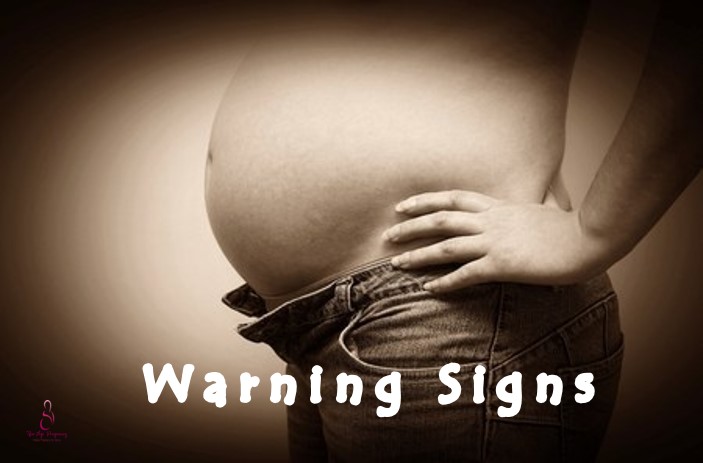
Many changes are happening in your body during pregnancy and while there may be discomfort commonly experienced such as aches and nausea, there are certain symptoms that you should never ignore. These symptoms are indicative of more serious health conditions or pregnancy complications, and it is best to consult your doctor early.
Vaginal bleeding
During the first eight weeks of pregnancy, spotting is usually a sign of embryo implantation in the uterus. Or if you have had sex recently, the spotting may be due to cervical irritation or vaginal tear. However, there are cases where vaginal bleeding is not to be ignored; for instance, if accompanied by severe, one-sided pain, it may indicate ectopic pregnancy (where the embryo develops outside of the womb). Other symptoms that warrant medical attention are vaginal bleeding with dizziness, excessive sweating, excessive vomiting or diarrhea.
Vaginal bleeding in later part of pregnancy may be a symptom of placenta prevue (where the placenta is too near the cervix) or placental abruption (where the placenta separates from the uterus lining). Both of these are serious pregnancy complications. Miscarriage is another possibility when there is vaginal bleeding, at times accompanied by abdominal pain.
Abdominal cramps/ pain
While it is common to have aches, pains or experience Braxton Hicks contractions, there are abdominal cramps and pains not to be dismissed. If your pain is severe, persistent and accompanied by other symptoms like bleeding, it may indicate pregnancy complications like ectopic pregnancy or even miscarriage. It may also indicate a cyst, which can be detected via an ultrasound scan. If a cyst increases in size or leads to excessive pain, it may have to be removed (typically at second half of pregnancy). A cyst will have to be monitored by the doctor.
Excessive swelling/ rapid weight gain
Swelling of the face and the hands are symptoms of preeclampsia, which is hypertension induced during pregnancy. Swelling may also be seen at the ankles and feet. Rapid weight gain sometimes accompany the swelling. Preeclampsia is more common in teen pregnancies or first pregnancies in women over the age of 35. It is important not to dismiss the swelling because preeclampsia can lead to eclampsia, that can result in seizures and coma. Doctors will monitor the blood pressure and prescribe an urine test. Depending on the severity, medication may have to be prescribed to prevent seizures and sometimes, warrant a cesarean delivery.
Visual disturbances
Visual disturbances include blurred vision, double vision, seeing flashing lights or floating spots. If accompanied by other symptoms like swelling, excessive weight gain, abdominal pain or headache, it may be a sign of preeclampsia. It may also be a sign of gestational diabetes, more common for those with a family/personal history of pre diabetes or type 2 diabetes and those who are overweight. Gestational diabetes can affect the baby, with an increased risk of preterm birth, excessive birth weight, low blood sugar or developing type 2 diabetes later in life.
Itch
Stretched skin during pregnancy may be dry and itchy. However, if accompanied by a rash that is intensely itchy and you cannot sleep at night due to the itch, it may be a rash known as Pruritic Urticarial Papules and Plaques of Pregnancy (PUPPP). PUPPP is more common in first pregnancy, and the rash typically starts around the umbilicus. The rash appears as small, raised spots in the stretch marks. Sometimes these can spread and merge, and affect other parts of the body like the thighs and buttocks. If the rash is on the palms and soles, it is a possible symptom of cholestasis of pregnancy. This refers to a buildup of bile, the digestive fluid from the liver, which is potentially dangerous and can result in preterm labour and stillbirth. See a doctor if the rash is persistent during your pregnancy.
Fever/ vomiting
A fever is a sign of infection and can be caused by various types of viral or bacterial infections. Fever that is higher than 39 degrees and that last longer than a day, can affect the fetus and thus, it is important to see your doctor. If a fever is accompanied by persistent or severe vomiting, call your doctor immediately as severe vomiting requires treatment in hospital.
Back pain
While back pain is common due to the strain from carrying a growing baby, severe, persistent back pain can be a sign of pregnancy-associated osteoporosis. Rhythmic pains may be a sign of preterm labour.
Reduced baby movements
From around 20 weeks, you will start to feel your baby move. Some mothers notice that their baby is quieter in the day and more active at night. Baby’s movements tend to increase when there is a temperature change or increase in sugar. If you notice that your baby is moving less, you can try to monitor the number of times your baby is kicking, drink chilled water or juice and see if there is movement. Reduced baby movements may be a sign of baby in distress.
Fluid discharge
During the third trimester, there may be an increase in vaginal secretions. However, if the liquid is clear, comes in gush, it may mean that your water has broken. Preterm labour can be dangerous for the baby as the lungs and other body organs have not fully developed. Doctors may prescribe medication to relax the uterus and reduce contractions and recommend bed rest if appropriate.
Painful urination
If urinating is painful, comes with burning sensation or contractions, it is a sign of possible urinary tract infection (UTI). UTI affects pregnant women more frequently as the growing uterus presses on the bladder and prevents the complete emptying of urine. The stagnant urine increases the likelihood of UTI. Untreated UTI may lead to kidney infection.
It is best to see a doctor if you experience any of the above symptoms as many of the pregnancy complications can be managed if detected early. It will also give you a peace of mind.
By Mei






